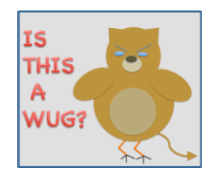FairWinds Partners — August 27, 2013
In the 1950s, a psychologist invented the “wug” test to determine when children understand how language indicates and distinguishes between singular, versus plural, items. The children were shown a picture of a single creature and told that it was a wug. Then the children were shown a picture with two of the creatures and were asked to finish the sentence “There are two ____.” Children as young as three were able to answer with “wugs”.
So here’s a 21st century version of the wug test: what’s the difference between .PET and .PETS?
According to a recent ruling by International Centre for Dispute Resolution panelist Richard Page, there isn’t enough of one: choosing to set aside UDRP precedent, Page ruled in favor of Google’s assertion that .PET (for which it applied) is confusingly similar to .PETS (for which Donuts Inc., a domain name registry, applied).
“The visual similarity and algorithmic score are high, the aural similarity is high, the meaning similarity is high. Objector has met its burden of proof. The cumulative impact of these factors is such that the Expert determines that the delegation of <.pet> gTLD and the <.pets> gTLD into the root zone would cause a probability of confusion.”

As Keven Murphy of DomainIncite points out in his blog on the ruling, other panelists came to the opposite conclusions in two cases before the New gTLD String Confusion Panel, one that found .HOTEL/.HOTELS were not confusingly similar and neither were .CAR/.CARS. FairWinds’ own legal specialist, Steve Levy, commented that “as we feared, this will lead to an inconsistent patchwork of rulings on singular vs. plural new gTLDs even though this seems to have been a non-issue in conventional domain names.”
So take the Wug test for the Internet Age for yourself and let us know what you think – how will the content on .KID differ from .KIDS? Or how will Internet users decide to go to a website in the .LOAN gTLD as opposed to one in .LOANS?
In Policy Updates gTLD, New gTLDs, UDRP, Wug